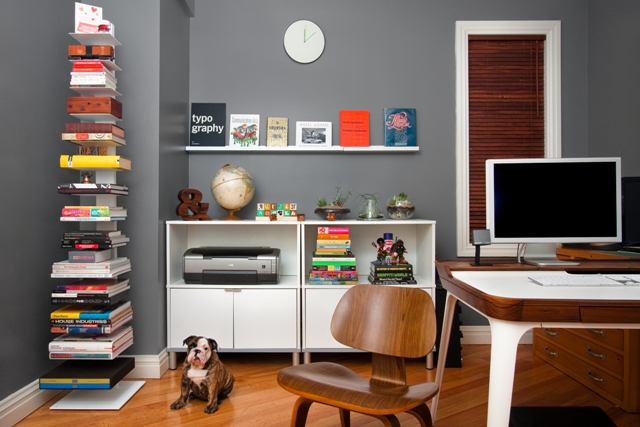Interior design is a complex artistic expression. One way to define the interior design is “the process of shaping the experience of interior space through the manipulation of spatial volume as well as surface treatment”. In other words, interior design involves the transformation of rooms through a variety of means. Factors to be included are psychological, architecture, and the purpose that the room is dedicated to.
There are several different elements that go into an interior design project. Let’s explore each one and see how it can be incorporated into the space.
1. Balance
You can think of balance as the way things are visually distributed around the room. There are three basic balance styles: symmetrical, asymmetrical, and radial.
Symmetrical means that things are more or less visually equal throughout the room. If you have one large bookshelf on the left side of the room, maybe you’ll have a large couch to visually balance it out in a symmetrical pattern.
Asymmetrical balance refers to a room which does not have equal visual distribution. This change in visual landscape is said to create the illusion of movement. Asymmetrical balance is more popular in today’s interior design trends.
Radial symmetry is different than the other two types. It is based on the shape of a circle. In radial symmetry, all the visual cues are centered around one main point.
2. Harmony and Unity
This element refers to viewing the building/business/home as a whole. Interior designers need to strive for some consistency from one inside space to the next. These spaces need to work together in a way that works for all of them. One way to help these spaces work together is through a choice of color. Selecting one signature color and working with it in different ways throughout the interior spaces can help the entire room speak as a single piece.
3. Focal Point
This elements sounds like what it refers to. In order to avoid boredom, you can make a room exciting by creating a specific place where the eye is drawn. Ideally, the focal point encourages the viewer to examine the space out of interest. Classic examples of focal points include fireplaces and flat screen TVs.
In some cases, interior designers need to create focal points. This can be done in a number of different ways. To create a focal point, you’ll need to highlight a feature of the room. This may be a piece of art in the room, a particular part of the room, or a selected piece of furniture. By playing with color and texture, you can create that interesting eye drawing element.
4. Rhythm
This element refers to the repetition of visual patterns in a room. You can think of rhythm in terms of continuity, movement, and recurrence. To effectively develop rhythm in a room, you will need to consider several different components:
Repetition –
This refers to how many times a particular element is repeated within the same visual landscape. Things that may repeat in a space include pattern, color, and texture. Often these combine in different ways and will provide different effects depending on how it is repeated.
Progression –
Progression refers to the quantity of a particular element from smaller to greater. For example, in the corner of your space you may have one small candle. As you move from the corner to the opposite wall, you may find increasing numbers of candles of greater size. This can be accomplished on a small or large scale.
There are many ways to exercise progression besides size. One popular method is through color. For example, you can work your way through different shades of the same hue in a progressive way throughout your space.
Transition –
This element is a little more tricky than those previously stated. Transition is the process in which the eye naturally follows from one area to the next. Typical transitional design elements include curved lines such as those created by arches.
Louise Williams has traveled all over the globe to study and capture all of the various types of signs out there. She has become familiar with many interior design projecrs and has discovered a few major elements to include in your project.
